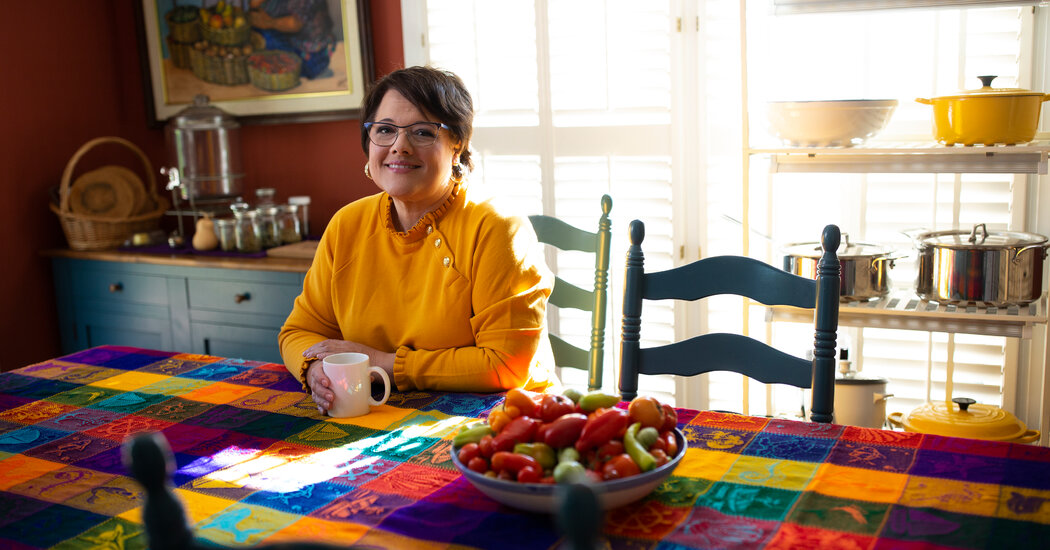
For her latest cookbook, “Latinísimo,” Sandra A. Gutierrez found creative ways to meet cooks to document the home cooking of Central and South America, and the Caribbean.
Just as Sandra A. Gutierrez was about to embark on a research trip to the 23 cities throughout Latin America that she planned to cover in her fifth cookbook, the coronavirus pandemic grounded international travel.
It was yet another hurdle for Ms. Gutierrez, who had spent four years narrowing down a list of 9,000 recipes to about 500 for “Latinísimo: Home Recipes From the 21 Countries of Latin America,” her encyclopedia-style cookbook, which was released last week in both English and Spanish editions.
Recipe: Arroz con Maiz y Crema (Cheesy Rice Casserole With Corn)
Instead of taking the trip, she moved hundreds of preplanned interviews to Zoom and scheduled at least 40 online cooking classes with experts. To perfect sancocho de Domingo, Ms. Gutierrez turned to Francisco Castro, a chef in Panama, who taught her how to make the chicken and root vegetable soup, and followed up with dozens of other Panamanian cooks who shared their tips for the dish.
She wanted her book to highlight the home cooking from every country in Latin America, but especially the recipes from nations whose cuisines remain unknown to many Americans. To do so, Ms. Gutierrez combed through family recipes rife with measurements like “a little bit of this” and “a little bit of that,” and other idiosyncratic instructions.
She found other dishes from out-of-print cookbooks in libraries, like the one in Cartagena, Colombia where she dug through old books and talked to other patrons while her husband, Luis Gutierrez, enjoyed a day at the beach. She used her research to uncover commonalities in the recipes she used as references for her own dishes in her book.
“There’s so much more that could’ve been included,” she said, adding that there’s a dearth of modern cookbooks representing Latin American cuisine. “I’m one writer, one author, and none of us can cover the entirety of Latin American food in one book.”
For decades, Ms. Gutierrez, who is the author of four other cookbooks including “The New Southern-Latino Table,” has kept a running list of thousands of dishes hoping that one day, she’d be able to use them for a more encyclopedic book.
Recipe: Pasta con Palta (Creamy, Vegan Avocado Pesto Pasta)
Born in Philadelphia but raised by her Guatemalan parents in Guatemala City, Ms. Gutierrez spent her childhood traveling throughout Central America. For 30 years, she’s lived in Cary, N.C., where she worked as the food editor for The Cary News and taught cooking classes.
As she sorted through her recipes for “Latinísimo,” she decided to organize the dishes by ingredient instead of by country to better illustrate the role of exchanges brought on by colonialism and immigrants who moved to the region.
But with modern habits in mind, she prioritized recipes that are weeknight friendly and include ingredients that busy home cooks can easily find in their grocery stores or online. The Spanish edition of “Latinísimo” contains a glossary that aims to tackle regional differences in the language: Leeks, depending on the country, are known as porro, ajoporro, cebolla larga, puerro and puerrito, for example.
Still, there is much about Latin American cuisine that is confined to the home cook’s kitchen, undocumented by cookbooks, said Maricel Presilla, the author of “Gran Cocina Latina,” which won the cookbook of the year award from the James Beard Foundation in 2013.
“There’s a very important generation of cooks that’s disappearing, and there are recipes that are endangered everywhere that need to be saved,” Ms. Presilla said.
Follow New York Times Cooking on Instagram, Facebook, YouTube, TikTok and Pinterest. Get regular updates from New York Times Cooking, with recipe suggestions, cooking tips and shopping advice.
